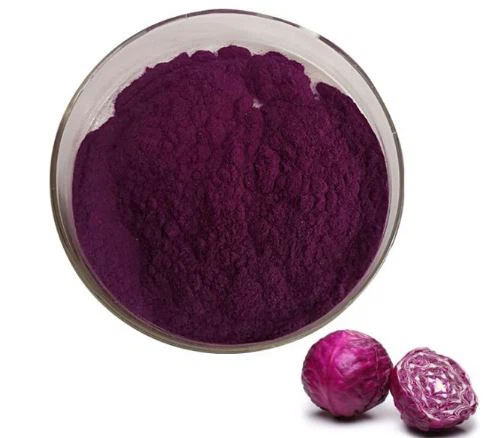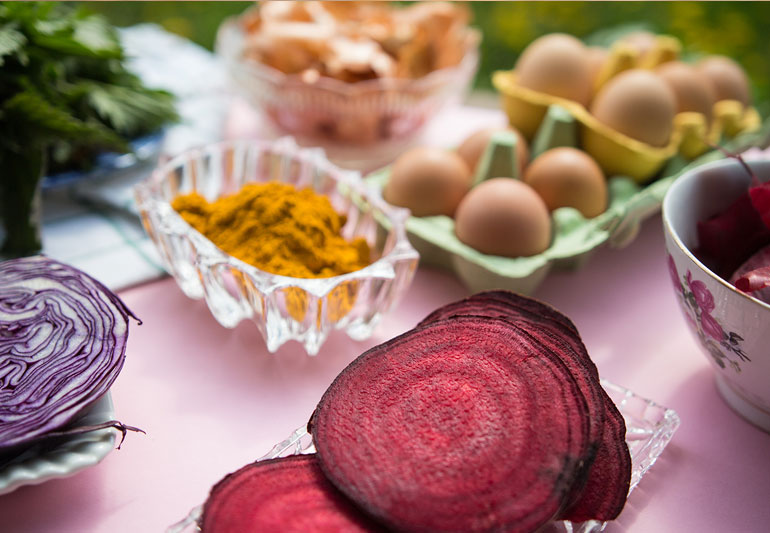The Health Benefits of Plant-Based Food Colors
In an age where consumers are growing more conscious of what they eat, the spotlight is shifting from just calories and flavor to the ingredients that make up a product’s color, texture, and nutritional value. Among the rising stars of this movement are plant-based food colors—not just for their vibrant appearance but also for their health-promoting properties.
Unlike synthetic dyes, which offer nothing more than artificial color (and sometimes potential health risks), plant-based colors are derived from fruits, vegetables, roots, flowers, and algae—natural sources that are rich in nutrients and bioactive compounds.
In this article, we explore the surprising and science-backed health benefits of plant-based food colors, and why incorporating them into food, beverages, and supplements is a smart choice for health-focused brands and consumers alike.
What Is Plant Based Food Colors?
Plant-based food colors, derived from natural sources like fruits, vegetables, and algae, offer several health benefits due to their rich nutritional content and potential bioactive compounds. These colors can contribute to antioxidant, anti-inflammatory, and even anti-cancer properties, while also enhancing the nutritional value and sustainability of food products.
That plant-based food, colors are nontoxic or less toxic in nature, have fewer side effects than synthetic colors, and have a gradual increase in therapeutic use.
Natural food colors are obtained from different sources, such as fruits, vegetables, minerals, plants and other natural sources that can give color when added to food or beverages. They give foods and beverages an attractive appearance.

What Types Of plant-based Food Colors?
At Yangge Biotech, we proudly offer a wide range of plant-based food colors that are clean, safe, and ideal for today’s health-conscious consumers. Unlike synthetic dyes or those derived from insects or minerals, our colorants are extracted exclusively from plants, fruits, vegetables, and botanical sources—making them suitable for vegan, vegetarian, Halal, Kosher, and allergen-free formulations.
Below, we explore some of the most commonly used plant-based color types in the food industry and how they align with special dietary needs:
1. Chlorophyll
Companies extract chlorophyll from green plants like spinach and alfalfa, using it widely for its bright green color and antioxidant properties. In the food industry, they value it not only for coloring products like ice creams and cakes but also for its health benefits. Studies suggest chlorophyll helps detoxify the body and may improve digestion.
2. Turmeric
Is a yellow root popular for both its medicinal properties and vibrant color. It is a source of curcumin, a potent antioxidant and anti-inflammatory compound. Its use in the food industry spans from vegan products to foods intended for those with allergies or dietary restrictions.

3. Carmine
One of the oldest colorants comes from the cochineal insect, primarily used to create a vibrant red color in dairy. However, since it originates from animals, vegan products exclude it, leading some companies to use plant-based alternatives like beetroot for similar shades.

4. Betalains
Companies extract this pigment from beets, making it ideal for providing reddish and purple colors. Producers widely use it in foods and drinks seeking intense colors without synthetic or animal-derived ingredients. Additionally, researchers have found that betalains offer antioxidant and anti-inflammatory properties, which appeal to healthy food production.
5. Anthocyanins
This pigment, present in fruits like blackberries, blueberries, and grapes, produce colors ranging from red to purple. Manufacturers use them in products such as jams, juices, and candies. Research also links them to cardiovascular health improvements and a reduced risk of chronic diseases, appealing to health-conscious consumers.

6. Carotenoids
Responsible for the orange and yellow colors in carrots and pumpkins, are an excellent choice for the food industry. In addition to their ability to provide attractive color, carotenoids are precursors to vitamin A, essential for vision and immune system health.
7. Spirulina
A blue-green microalga, is another natural option used in the food industry. In addition to its coloring ability, spirulina is rich in proteins and antioxidants, making it a highly valued ingredient in functional foods and dietary supplements. Its use has increased especially in vegan and allergen-free products.

What Are The Benefits Of Plant-based Food Colors
1. Natural Antioxidant Protection
One of the most compelling health benefits of plant-based food colors is their high antioxidant content. The pigments that give plants their color—such as anthocyanins, carotenoids, chlorophyll, and betalains—are powerful antioxidants that help protect cells from oxidative stress and free radical damage.
-
Anthocyanins (found in red cabbage, purple sweet potatoes, and berries) are linked to improved heart health and reduced inflammation.
-
Curcumin (from turmeric, a natural yellow colorant) is known for its strong anti-inflammatory and antioxidant effects.
-
Chlorophyll (a green pigment found in leafy vegetables) helps detoxify the body and supports liver function.
These natural pigments are not just colorants—they’re functional ingredients that contribute to long-term health.

2. Anti-Inflammatory Properties
Many plant-based food colors contain compounds that reduce inflammation, which is at the root of numerous chronic conditions like heart disease, arthritis, and obesity.
Standout Ingredients:
-
Turmeric (Curcumin): Offers one of the most researched natural anti-inflammatory agents. It helps reduce inflammation in joints and may lower the risk of metabolic syndrome.
-
Beetroot (Betalains): Known for supporting cardiovascular health by lowering blood pressure and improving blood flow.
Incorporating these pigments into food products doesn't just enhance their appeal—it adds functional benefits that contribute to a balanced and anti-inflammatory diet.

3. Supports Heart Health
Several plant-derived pigments have been studied for their cardioprotective effects. They may help manage blood pressure, reduce bad cholesterol (LDL), and improve circulation.
-
Anthocyanins from red and purple plant sources have been linked to lower risk of heart disease.
-
Beetroot extract, rich in nitrates and betalains, supports vascular health and oxygen delivery in the bloodstream.
-
Lutein and zeaxanthin (yellow pigments from marigold and corn) also contribute to heart and eye health.
By choosing plant-based food colors, you’re offering nutritional benefits that go beyond aesthetics.

4. Promotes Detoxification and Liver Function
Green plant pigments—especially chlorophyll and chlorophyllin—are known for their role in supporting liver detoxification and cleansing the blood.
Benefits of green food colors:
-
Bind to toxins and heavy metals, aiding in their removal from the body.
-
Improve liver enzyme function.
-
Act as natural deodorants and body cleansers.
Green colors from sources like spinach, wheatgrass, and alfalfa provide both vibrant color and detox support, making them excellent ingredients in wellness beverages and functional foods.

5. Eye and Skin Health Support
Some plant-based colorants are rich in nutrients that support vision and skin health.
-
Carotenoids (natural orange and yellow pigments from carrots, pumpkin, marigold) are converted in the body to vitamin A, which supports eye health, immune function, and healthy skin.
-
Lutein and zeaxanthin, in particular, protect the eyes from blue light and reduce the risk of age-related macular degeneration.
-
Anthocyanins may improve skin elasticity and reduce oxidative skin damage caused by UV exposure.
This makes plant-based food colors an attractive choice for nutricosmetics, wellness drinks, and beauty-from-within products.
6. Enhances Gut Health
Plant-based colors often come with natural fiber, polyphenols, and prebiotic compounds that promote a healthy gut microbiome.
-
Red and purple pigments (like those in purple carrots or berries) can support gut bacteria balance.
-
Chlorophyll helps promote alkalinity in the body, potentially easing acid reflux and promoting digestive health.
-
Some colorants, such as beetroot, also help stimulate digestion and support stomach acid production.
Incorporating these colors not only brightens your product but also supports digestive wellness, a growing trend in functional food.
7. Safe for Sensitive Populations
Unlike synthetic dyes, which may trigger allergic reactions, hyperactivity in children, or other side effects, plant-based colors are generally well-tolerated by most people.
Benefits include:
-
No petroleum-derived compounds or artificial additives.
-
Free from major allergens like gluten, soy, dairy, and nuts.
-
Suitable for vegan, Halal, and Kosher dietary needs.
-
Often labeled as non-GMO and organic.
This makes them a safer choice for children, pregnant women, elderly populations, and individuals with sensitivities.
8. Clean-Label and Health-Conscious Appeal
Using plant-based food colors allows manufacturers to market their products as:
-
“Made with real fruit and vegetable extracts”
-
“Free from artificial colors”
-
“Clean-label”
-
“Plant-powered” or “Naturally colored”
This aligns perfectly with current consumer preferences for simple, recognizable, and health-promoting ingredients. Brands that emphasize natural colorants often gain higher trust and brand loyalty from health-focused shoppers.

Common Plant-Based Color Sources and Their Health Attributes
| Color | Plant Source | Health Benefit |
|---|---|---|
| Yellow | Turmeric, Gardenia, Marigold | Anti-inflammatory, antioxidant, supports joint health |
| Red | Beetroot, Red Cabbage, Hibiscus | Heart health, blood pressure regulation, rich in polyphenols |
| Green | Spinach, Alfalfa, Matcha | Detoxifying, immune-boosting, rich in chlorophyll |
| Purple | Berries, Purple Sweet Potato | Brain support, anti-aging, rich in anthocyanins |
| Orange | Paprika, Carrot, Pumpkin | Eye and skin health, immune support |

Conclusion
Plant-based food colors are more than just vibrant pigments—they're nutrient-rich functional ingredients that offer a wide range of health benefits. From supporting heart and brain health to promoting detoxification and reducing inflammation, these natural pigments help bridge the gap between appearance and wellness.
As food and beverage innovation moves toward cleaner, greener, and more transparent formulations, the choice is clear: plant-based food colors are the healthier, safer, and smarter option for brands and consumers alike. YANGGEBIOTECH manufacturer Natural Food Coloring Powder: beta-carotene, blue spirulina powder,copper chlorophyll sodium salt, butterfly pea pollen source plant roots, stems, leaves, flowers, fruits, used in products, beverages, wine, cakes, candy, medicine, etc. we offer free samples 10 -30g, to add this branded ingredient to your final product, please email: info@yanggebiotech.com
Send Inquiry
Related Industry Knowledge
- How Yeast Extract Beta Glucan Powder Can Boost Your Immune System
- Beetroot Red: Trendy Ingredient for Wellness
- Can Organic Psyllium Husk Powder Use in Baking
- Can Borage Oil Benefits Weight Loss
- Methionine Inositol and Choline for Weight Loss
- Chlorella Tablets: A Natural Superfood
- what are the benefits of drinking chlorophyll everyday
- Is beta-glucan good for the skin?
- What does ergothioneine do for skin?
- What are the health benefits of red radish powder?



